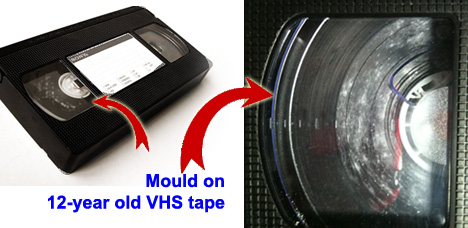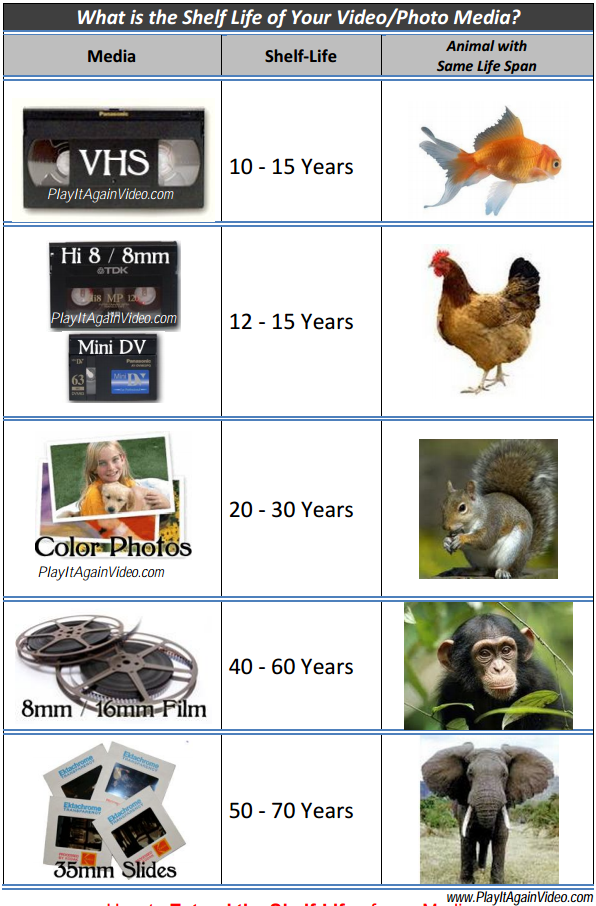If you have not transferred your aging home videos to digital formats, chances are:
- you believe that your home video tapes last forever. You believe that if you take good care of them, put them in a cool, dry place, don’t let the kids bang them around, the tapes will last forever.
- or you believe these tapes are of times gone by, your VCR player is gone, there’s no way to play those tapes anymore, so you should just toss the tapes out.
The bad news is that your video tapes do not last forever, but the good news is that it’s not too late to digitize your tapes into today’s digital formats so you can watch them again today.

Video tapes – which includes VHS, VHS-C, Betamax, VHS, 8mm and mini-DV – degrade with time because the film tape is made of magnetic media. What you see ten, twenty years later is no where as sharp as when the tapes were first created. So, what is the shelf life of a magnetic tape ?
If you ask an audio/video professional that question, the answer you get can range anywhere between 5 to 10 years. This is because it depends a lot on how 1) you handle it, 2) how you store it and 3) how often you play it. Have you been following these best practices:
How to Handle Your Video Tapes
• Never touch the tape itself. Hold it by the side of the cassette
• Rewind the cassette before storing it.
• Keep away from curious kids, avoid dropping or banging the tapes.
• Keep cassettes away from magnetic fields
• Don’t leave a cassette in the car where it will be exposed to heat and cold
• If using a new cassette and it’s still cold, let it warm up to room temperature first.
• Occasionally fast forward and rewind a tape that’s being stored a long time.
Where to Store Your Video Tapes
The conditions in which magnetic tape is stored and used can extend its shelf life. Observe these video storage tips:
• Store in conditions that are stable, cool and dry.
• Stay away from hot, humid and dusty.
• Store cassettes in the cassette case.
• Store your tapes vertically and not flat (see picture) to distribute the gravity pull equally and stably.
How often you play it?
If you haven’t played your tape since you shot the video, that’s 10-20 years of one section of the tape being stretched at the same spot. Consider the video on that spot pretty much degraded. If you’ve been playing it over and over and over again, you won’t encounter “blank fuzzy spots” but the entire tape has been stressed which also affects the shelf-life of your tape. What’s a person to do?
One answer: Digitize your aging home video movies into today’s digital formats that do not degrade. Digital formats are composed of 0 and 1 bits that do not inch to 1/2, or 3/4. A “0” bit, stays “0”. A “1” bit stays “1”. That’s as technical as I want to get here. The bottom line: A digital file today is identical towhat is is 100 years from today. Now, the media itself, the DVD can get scratched, or broken, but the digital file itself does not change.
Not sure what’s on your tape, but you no longer have a VCR player? Call us. Come by our on-site video transfer lab in Newton, MA, and view your old tapes.







Speak Your Mind